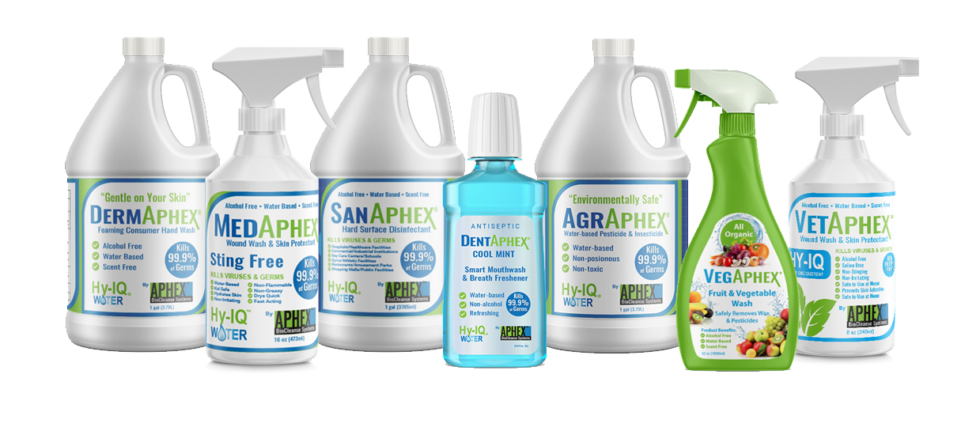Cleaners and disinfectants have become a sizable global market, especially in our post-Covid reality where proper sanitization can potentially save lives. Unfortunately, popular cleaners are doing irreparable damage to the planet we all share. Current sanitization products like shampoos, detergents, soaps, etc. are contributing to climate change, food chain contamination, and the destruction of ocean life through their use of ingredients like phosphates, surfactants, and microplastics.
Let’s take a look at the dangers typically associated with established cleaning products and explore ways to clean and disinfect safely and without causing harm to our environment.
Keeping Clean is Polluting the Planet
Humanity’s need to keep ourselves and our surroundings clean is negatively impacting the environment, as the ingredients used in traditional cleaners are too often absorbed into local ecosystems.
“The continued widespread use of cleaning chemicals to remove contaminants and dirt in our homes and factories ultimately finds its way into our drinking water. As an example, septic systems are designed to slowly drain away human waste underground at a slow, harmless rate. An improperly designed, located, constructed, or maintained septic system can leak bacteria, viruses, household chemicals, and other contaminants into the groundwater causing serious problems,” said David Weaver, CEO of sanitization solutions company Aphex BioCleanse Systems.
Phosphates are often added to products to boost their cleaning performance. Although their use peaked in the 1960’s, phosphates are still used in some cleaning formulas. The primary danger of these cleaners is the effect they have when washed into our waterways. Phosphates alter the carefully balanced ecosystem of our rivers and oceans by feeding algae growth, which in turn zaps oxygen from the water and reduces biodiversity.
Phosphates don’t just harm our ecosystems, they can also be harmful to humans. The use of phosphates has been linked to rashes and dizziness, renal and cardiovascular dysfunction, and possibly even cancer. While phosphates have been banned in some markets for certain types of cleaners, they still feature prominently in many cleaning products, including dishwasher detergents and industrial strength cleaners.
Many soaps and detergents also contain surfactants. These compounds decrease surface tension, allowing soaps to mix with water and helping to break down oil and grease, making surfactants popular additives in detergents. While they have little direct toxicity, when surfactants enter water systems and build up in the soil, they can increase the absorption of contaminants like heavy metals by plants. These contaminants then make their way into the food chain — and potentially onto your dinner plate.
The same is true for plastic scrubbing beads found in some cleaners. Common in hygiene products like facial scrubs, these tiny plastic pieces wash into streams and rivers on their way to the ocean. These scrubbing beads are big contributors to the growing amount of microplastics in our oceans. Some large manufacturers of commercial cleaners have pledged to avoid using plastics and turn to sustainable options instead.
“Many disinfectants sold in the market today are ineffective and are mostly comprised of Quaternary Ammonium Compounds (Quats). Despite their popularity, Quats are an outdated disinfectant technology and have several significant limitations and disadvantages. In fact, they are causing the germs, whether visible or invisible, to become resistant to the Quat chemicals designed to kill or greatly reduce their number,” continued Weaver.
Choosing Cleaner Cleaners
One way we can protect our planet, and specifically the ecosystems around our waterways, is to choose cleaners that don’t rely on the common chemicals and other ingredients currently damaging our environment, contaminating our food, and contributing to climate change.
When shopping for cleaners, whether at home or industrially at work, there are some important factors to examine. This checklist will help you determine the safety and sustainability of the products you choose.
- Does it contain ingredients that are harmful to me, my family, or my employees?
- Does it contain ingredients that are harmful to my local ecosystems?
- What is its biodegradability?
- Does it excessively contribute to environmental plastics?
- Does it contain unintended contaminants?
- Does it contribute to chemical resistant pathogens?
“The simple answer is to become familiar with the ingredients in the cleaning solutions you use. Just because the package states that it is ‘green’, the ingredients may offer a different answer. Many ingredients are hidden by the manufacturers from the public out of the fear that the inclusion would cause customers to avoid the product,” said Weaver.

